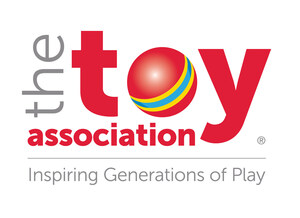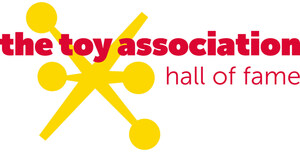
The Toy Association Offers Families Tips for Safe Toy Shopping & Play this Holiday
NEW YORK, Nov. 3, 2025 /PRNewswire/ -- With 80% of parents saying it's getting harder to spot counterfeit toys — up from 75% in 2024, according to a new survey of 1,000 U.S. parents commissioned by The Toy Association — families are being reminded to make sure they're selecting safe, authentic, and age-appropriate toys this holiday season. As part of the 5th annual Toy Safety Awareness Month, The Toy Association is offering parents, grandparents, and other gift-givers trusted toy and play safety advice throughout November on social media and at PlaySafe.org.
"The holidays are all about building core childhood memories, having fun as a family, and the excitement of new toys," said Joan Lawrence, The Toy Association's 'Toy Safety Mom' and senior vice president of standards and regulatory affairs. "But before checking off holiday shopping lists, gift-givers should know that it's crucial to be able to spot counterfeit toys lurking online. Legitimate toys sold by responsible brands and retailers must comply with 100+ rigorous federal safety standards and tests before reaching consumers, but knockoff toys sold by rogue sellers online may not comply with these same standards and may not be safe for kids. Informing families about how to spot counterfeit toys — and other important play safety tips — is a top priority for The Toy Association and our members during the holiday season and all year long."
As families get ready for a fun-filled holiday, they are encouraged to play it safe with these important tips from The Toy Association's PlaySafe.org:
Counterfeits
Nearly 90% percent of parents are concerned about the safety of knockoff toys, however, more than half (58%) say they are likely to still buy a toy from an online seller or brand they don't recognize if the price is cheaper than the name-brand version of the toy, according to The Toy Association's survey, conducted by Wakefield Research.
Knockoff toys sold by rogue, unknown sellers on third-party marketplaces are highly unlikely to comply with strict U.S. toy safety standards, including stringent regulations for small parts, magnets, batteries, physical and chemical properties, and more.
Safety Tip: Always buy the authentic toy from a known brand or retailer. If you can't find it, wait for a trusted retailer to re-stock the product you're looking for. It's much safer than buying a "fake" toy or cheaper alternative that has the potential to be unsafe. Learn how to spot counterfeits by reading our Toy Shopping Checklist for Families.
Age Labels
The age grading on toy packaging is not a suggestion — and it isn't about how smart your child is, either. Age labels offer crucial safety guidance from child development experts about what is safe and appropriate for children at each age. It's especially crucial to follow 3+ age labels, as these toys may contain small parts that are a choking hazard for children under the age of 3.
Safety Tip: Toys labeled for older children may contain small parts that pose a choking risk to kids under three and those who mouth objects. Always check — and follow — the age recommendation on toys. It can protect a child from preventable injuries! Check out this easy-to-follow infographic on age labels to learn more.
Smart Toys Internet-connected technologies have the potential to add fun, enriching, and educational features to children's toys. In addition to following more than 100 stringent federal safety standards and tests for safe toy design and production, companies also comply with the Children's Online Privacy Protection Act (COPPA), which is overseen by the Federal Trade Commission (FTC).
Safety Tip: As "smart toys" and other connected products in the home become more common, parents are advised to only bring connected products into the home that they feel comfortable with. Familiarize yourself with a toy's privacy policy, enable all parental controls, and disable the device's camera and chat functionality as needed. Click here to learn more about smart toys, and check out these tips to help protect the privacy and safety of children in digital spaces.
Non-Toy Gifts
Sometimes, kids are gifted (or come into contact with) non-toy products such as desk accessories, home decorations, watches, and remote controls that are not meant for kids and may contain small batteries, non-toy water beads, and/or high-powered magnets that can be accessed by children and are very dangerous if accidentally swallowed. Similarly, latex balloons are not toys and can pose a choking risk to children when uninflated or broken into pieces.
Safety Tip: Stick with purchasing toys intended for children, since there are strict federal standards in place to make sure those products are safe. Watch our Toy Safety 365 Days a Yearvideo for more information, including tips from a pediatric emergency medicine physician.
Parents and other toy shoppers are urged to visit PlaySafe.org for even more safety advice, including shareable resources, and to follow #ToySafetyAwarenessMonth and #PlaySafe on social media for videos, infographics, and advice from The Toy Association.
About The Toy Association™ toyassociation.org / toyfoundation.org / peopleofplay.com / thegeniusofplay.org / playsafe.org
Founded in 1916, The Toy Association™, Inc. is the business trade association representing all businesses involved in creating and delivering toys and youth entertainment products for kids of all ages. The Toy Association leads the health and growth of the U.S. toy industry, which has an annual U.S. economic impact of $157.5 billion, and its roughly 900 members drive the annual $41 billion U.S. domestic toy market. The Toy Association serves as the industry's voice on the developmental benefits of play and promotes play's positive impact on childhood development. The organization has a long history of leadership in toy safety, having helped develop the first comprehensive toy safety standard more than 40 years ago, and remains committed to working with medical experts, governments, consumers, and the industry on ongoing programs to ensure safe and fun play.
As a global leader, The Toy Association produces the world-renowned Toy Fair™ in New York City; hosts marketplace activities in Los Angeles; engages in state, federal, and international advocacy on behalf of its members; supports the inventor and design community through People of Play™ and its numerous assets and events, including the consumer-facing Chicago Toy & Game Fair; sustains the Canadian Toy Association; acts as secretariat for the International Council of Toy Industries and International Toy Industry CEO Roundtable; and chairs the committee that reviews and revises America's widely emulated ASTM F963 toy safety standard. The Toy Association's philanthropic arm is The Toy Foundation™, a 501 (c)(3) children's charity that acts as the uniting force for the collective philanthropy of the toy industry. To date, The Toy Foundation has delivered the joy of play to 33 million children in need worldwide.
SOURCE The Toy Association








Share this article